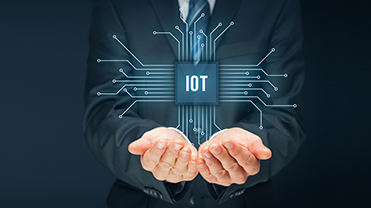Accelerating your B-IoT journey into the connected world of 2025
Across the world, four children are born every second. It may surprise you to know that in that same moment, 127 devices are added to the Internet of Things (IoT), the system that connects those devices, and lets us derive insights from the data they generate. Never before have we had such an abundance of data. Now, let us invite you to the connected world of 2025. In the next five years, our planet will be home to approximately 75 billion smart devices. With the population at 8 billion that’s almost ten devices per person. There will be 470 million connected cars and 80 million smart connected homes. Those devices will produce around 80 trillion GB of data creating an IoT market valued at more than 1 trillion US$. It’s an exciting world those babies are being born into!
Buildings-IoT will shape our future
One of the most important markets, now and in the future, for all those connected devices are the buildings we inhabit. Ninety percent of our lives are spent within buildings whether homes, schools, offices, factories, hospitals, shopping complexes, restaurants, sports stadia, or airports. And those buildings account for around 40 percent of the world’s energy consumption. So, there are powerful motivations for improving their efficiency. Buildings IoT (B-IoT) is set to have an exponential impact on all our lives. Smart devices in buildings already include heating, ventilation and air conditioning systems (HVAC), elevators, fire alarms, lighting, and security systems. We have sensors that can tell us about occupancy rates. We can measure energy and water utilization. When the data generated by each of those systems is effectively read and acted upon, we can reduce energy consumption, make our buildings more efficient and their occupants more productive. We can create safer environments, where businesses perform better and in doing so, achieve important sustainability goals.
A complex world of devices, networks and applications
There are three layers to this B-IoT ecosystem. The ‘device layer’ where embedded sensors capture data, the ‘network layer’ where this data is shared and transmitted, and the ‘applications layer’ through which we turn data into actionable insights gained to make efficiency improvements and create better customer experiences. Some of these applications may reside on-premises, but of course, much of it is done in the cloud, which enables us to manage vast amounts of data. The applications can include building management systems where the data from across the whole building is captured and analyzed. It can generate insights that allow us to predict and plan maintenance.
It’s a complex ecosystem with many participants. Original equipment manufacturers (OEMs) make machines, sensors and other devices. Gateways, stacks and routers capture and transmit the data. System Integrators act as architects to bring the disparate parts together in unique combinations. Middleware platforms aggregate and process data so that it can be used to power value-added applications.
Keeping safer with fast-evolving protocols
The challenge is that all these parts of the system operate on different communications protocols – they essentially speak different languages. Connecting the various parts of the ecosystem is a vital part of the B-IoT world. It is only when we can translate the data into an everyday language that we will be able to extract its value and improve our buildings. For existing buildings, we would retrofit smart devices and for new ones we would embed the latest smart technologies. In subsequent blogs, we will discuss the existing connectivity protocols such as BACnet and Haystack and how they are evolving to meet the needs of building owners, operators and occupants in the coming years. In addition to making buildings more habitable, these protocols can protect us from cyber-attacks. We will look at how innovations such as BACnet/SC will make our surroundings more secure and how B-IoT can help us get back to a ‘new normal’ as building regulations become tighter and occupants, rightfully concerned about safety, place more demands on operators. In the meantime, you can explore how IoT can be applied in hospitals to make them safer for patients and medical professionals.




